Buy generic orlistat australia no prescription
Whether you’re a seasoned pro or are just heading out on a much-needed vacay, water sports and activities are a great way to get moving, have fun, and enjoy the great outdoors.
Swimming, surfing, snorkeling, and all of the other ways you get active in the H2O have serious mind-body payoffs, too. Not only do water sports decrease your risk of chronic diseases (like heart disease and diabetes) but they’ve also been shown to offer a serious mental health boost. I mean, come on, how can you not feel instantly calm with the sounds of waves or a lapping lake nearby?
This has all certainly been true for former pro surfer Jessi Miley-Dyer, head of competition for the World Surf League. “I truly believe that water sports are cleansing. I always feel like I’m a better version of myself when I get out of the water,” she says. “I started surfing when I was young and I remember just loving being at the beach. Today, surfing has become an escape; when I surf, I don’t have to worry about anything else going on in my life or in the world.”
You don’t have to rip through major waves to reap these benefits, though. Whatever gets you in the water works, Miley-Dyer says. Whatever your comfort level (or interest in getting that adrenaline flowing), one of the following water sports is guaranteed to fit your vibe and lifestyle.
1. Windsurfing
Difficulty: Moderate
Windsurfing is one of those sports that you can definitely try out if you’re a beginner as long as you take a class at a windsurfing or sailing school. (There’s a lot of equipment going on!) Check out the Cal Sailing Club for more deets on how to give this fun one a try.
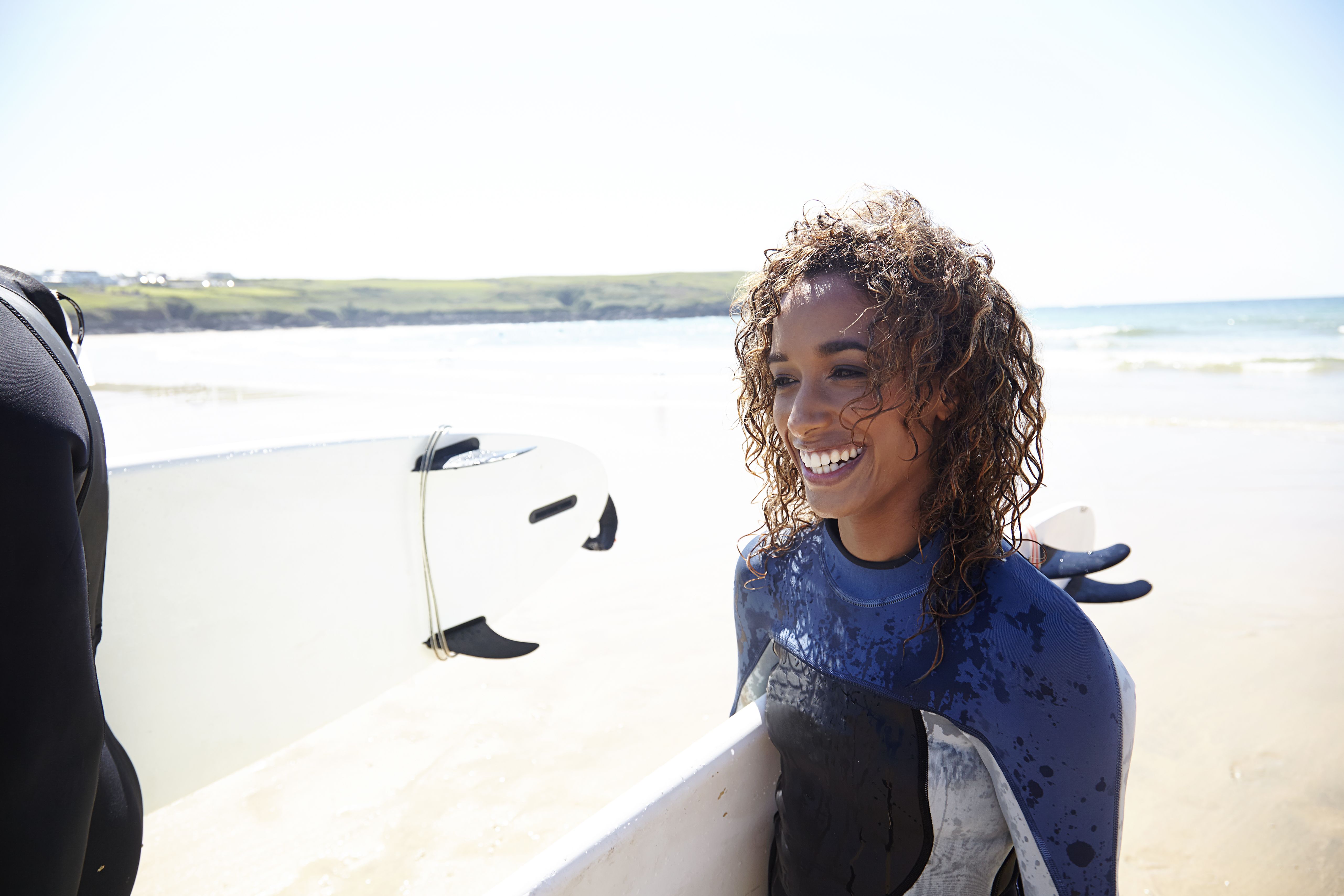
2. Surfing
Difficulty: Moderate
If you crush hard on the surfing videos in your Instagram feed, this summer is your time to catch some waves of your own. Never surfed before? Most beach communities have surf schools that offer lessons for all levels.
Otherwise, find friends who are comfortable in the waves to take you out. “It always helps when it’s not just you by yourself because starting out can be frustrating,” explains Miley-Dyer. “It’s like having a gym buddy to support and motivate you, who can also help you in case you get into trouble.”
3. Boating
Difficulty: Beginner
If you read the “beginner” status and made a quick mental note of the fact that you don’t actually own a boat, don’t worry. You can find all sorts of rentals in pretty much any community near a body of water—and if you don’t want to take on any waves (don’t blame you there!), you can always opt for a lake or bay. Check out Discover Boating to learn more about boating, rentals in your area, and even safety practices.
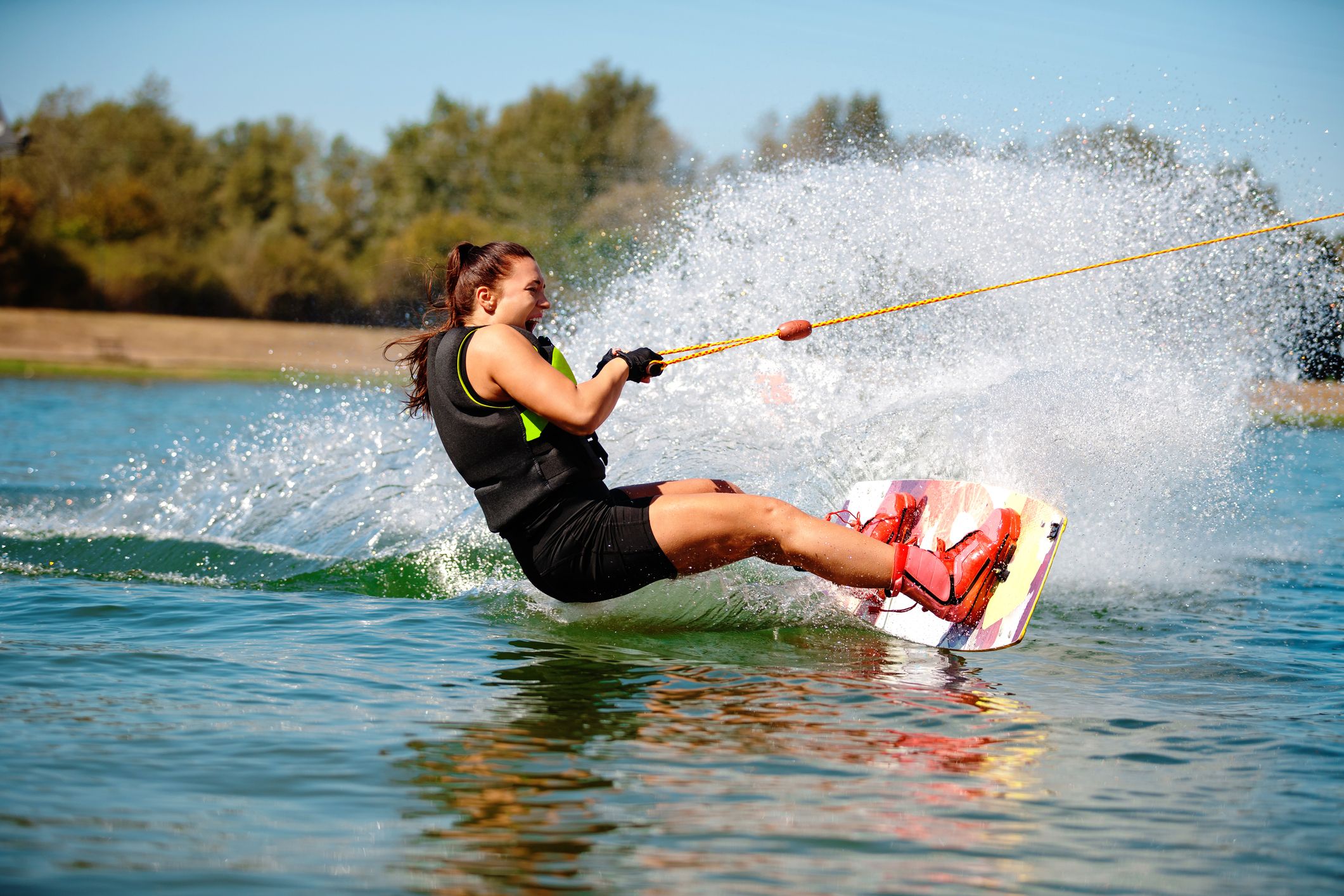
4. Wakeboarding
Difficulty: Moderate
In addition to the actual board, wakeboarding requires a boat and a rope, so make sure you’ve got some friends or an instructor handy if you want to give it a go. After you stalk the World Wake Association and feel totally inspired to get boarding, know this: Once you master the first, most difficult step—standing—it all gets so much easier.
5. Skimboarding
Difficulty: Moderate
You may remember skimboards as those funny-shaped foam-topped boards with wooden bottoms that teenagers always seem to be messing around with at the beach. If you’re going to a beach with a large, flat slope, it’s a perfect activity. While you can definitely find some pros who take their boards right into the waves, you can totally stick to the shoreline (like in this video, but maybe without the flip at the end!).
6. Bodyboarding
Difficulty: Beginner
Don’t sleep on bodyboarding (a.k.a. boogie boarding) just because you did it as a kid—it’s truly fun for all ages. The best part? You can truly make it as adventurous as you want. Stick knee-deep waves or kick out (swim fins come in clutch here) to grab the big swells.
This is also a great place to start if you want to surf but feel intimidated since it allows you to get familiar with the board and the ocean, says Miley-Dyer.
7. Kneeboarding
Difficulty: Beginner
This activity is super popular on lakes, and for good reason: It’s not as technically difficult as wakeboarding, but it’s still so much fun. (Yep, instead of standing, you just kneel!) Of course, it does require a friend and a boat to pull you, but from there you can pretty much learn on-the-spot.
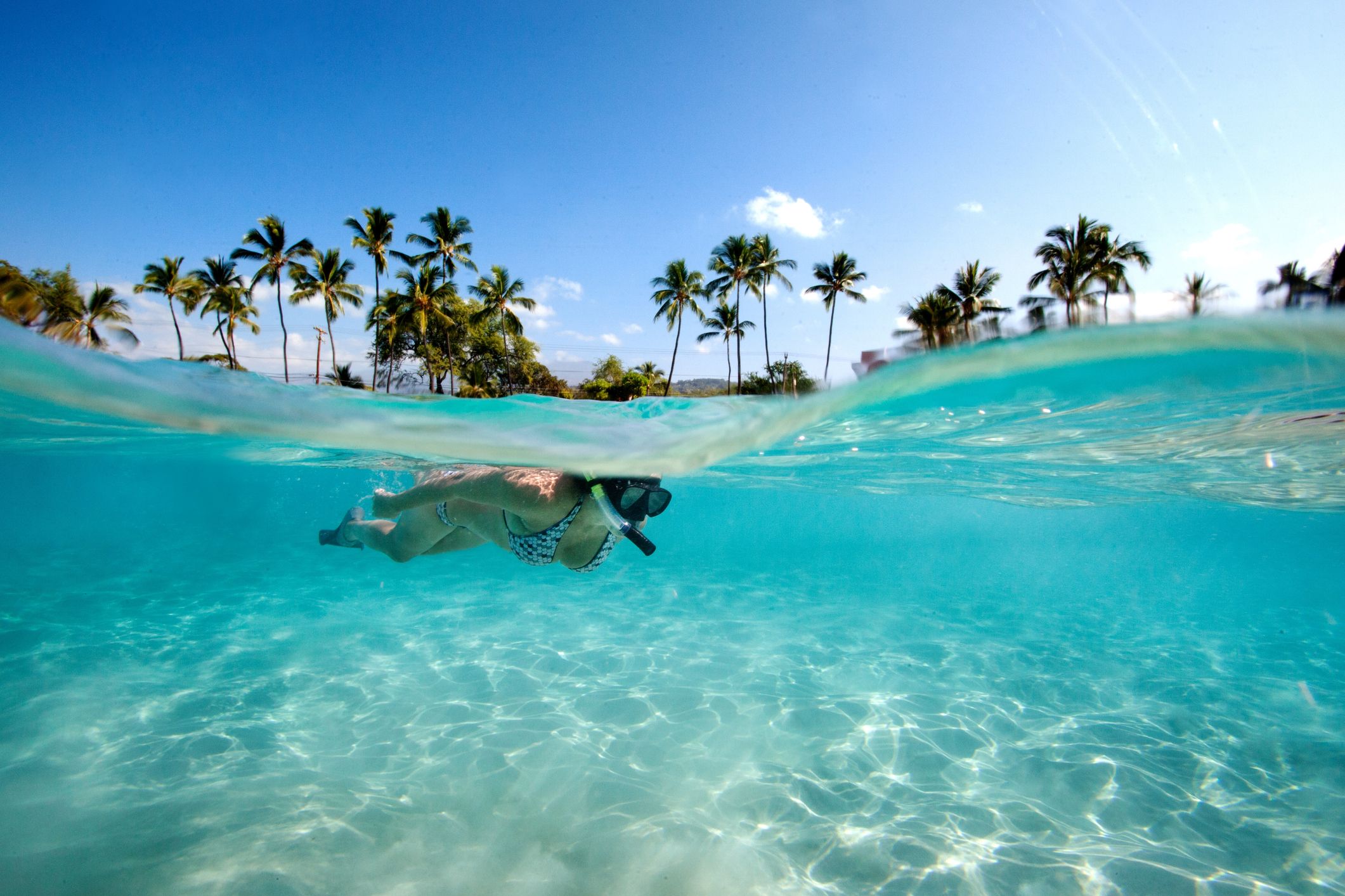
8. Snorkeling
Difficulty: Beginner
Don’t you dare sleep on snorkeling, especially if you’re visiting a new, scenic beach. It’s truly the best way to get a glimpse of the aquatic life below without disturbing the ecosystem. If you happen to be staying at a resort, call and ask if they provide free gear to guests (they often do). Otherwise, you can rent the snorkeling basics at most water sport shops. Just don’t forget the reef-safe sunscreen!
9. Scuba Diving
Difficulty: All levels
Scuba diving can definitely be suitable for all levels because anyone who wants to try has to complete a training class. Scope out the National Association of Underwater Instructors to find a quality instructor. From there, they’ll teach you all about the equipment and breathing techniques required to explore the depths of ocean.
10. Snuba Diving
Difficulty: Beginner
Don’t want to set aside hours of your time to get scuba certified? Enter snuba diving. This activity allows you to dive much deeper than you would free diving or snorkeling (as far as 20 feet) thanks to an air supply that remains above the water. This way, you don’t have to worry about oxygen tanks and breathing techniques. Check out SNUBA’s website to learn more and hunt for an opp to try it near you.
11. White Water Rafting
Difficulty: All levels
If you’re looking for a jolt of adrenaline, white water rafting is the way to go. Not only will you be able to explore nature from the vantage point of a rushing river, but you’ll also be accompanied by a guide to keep you safe. Plus, it’s a great activity for families or groups of friends.
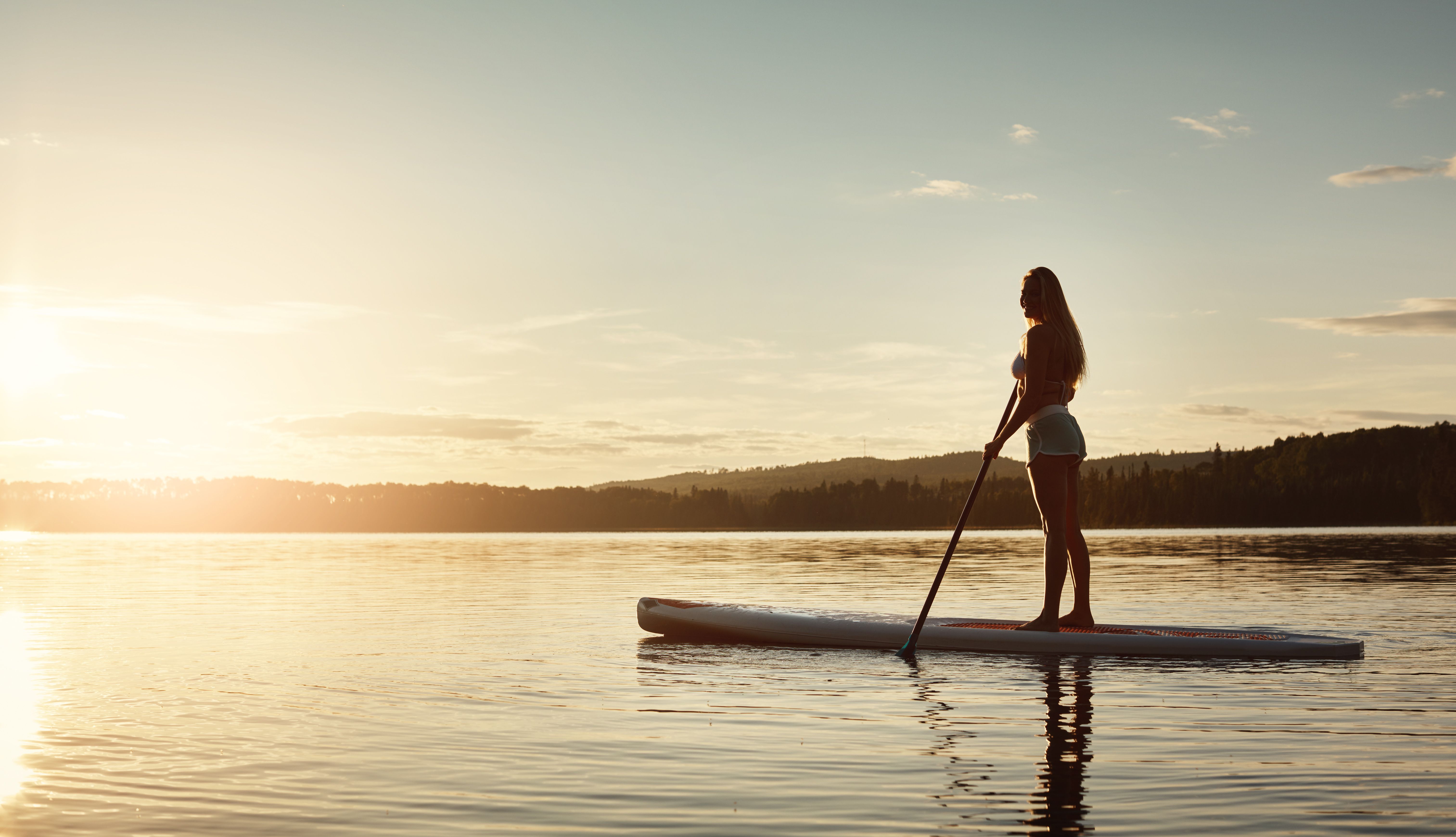
12. Stand Up Paddleboarding
Difficulty: Moderate
While paddleboarding may look peaceful from a distance, it’s a great workout for your legs, arms, and core. The Professional Stand Up Paddle Boarding Association offers up some good tips, including how to learn to stand up on the board (which is harder than it looks). Of course, though, you can always float along in a seated or kneeling position if you find standing too uncomfortable or daunting.
13. Water Aerobics
Difficulty: Beginner
For those that want to integrate the pool into their workouts, water aerobics are a great way to go. Classes are offered at lots of local pools and are a great low-impact option for those overcoming injuries. If you’re looking to branch out, some cities even offer floating yoga, aqua spin, and aqua Zumba!
14. Kayaking
Difficulty: All levels
Kayaking is one of those activities that you can really make your own. If you want to explore a resort, many offer up free kayaks that you can hop in. Or, you can always start training for rapids if you’re looking for a bit more of an adrenaline rush.
15. Kiteboarding
Difficulty: Moderate
While kiteboarding requires some equipment, it’s a fun, unique way to enjoy the breeze and the waves. The International Kiteboarding Organization offers an array of beginner classes all around the globe, an impressive stockpile of videos, and an app that allows you to check out good spots where other surfers are having fun.
16. Water Polo
Difficulty: Moderate
If you love the water and find that you enjoy workouts the most when there’s an element of competition involved, water polo is a fun option. Many recreation centers offer intramural teams, which are a great option for those that are looking to make friends while scoring a full-body workout (ahem, you tread water the entire time).
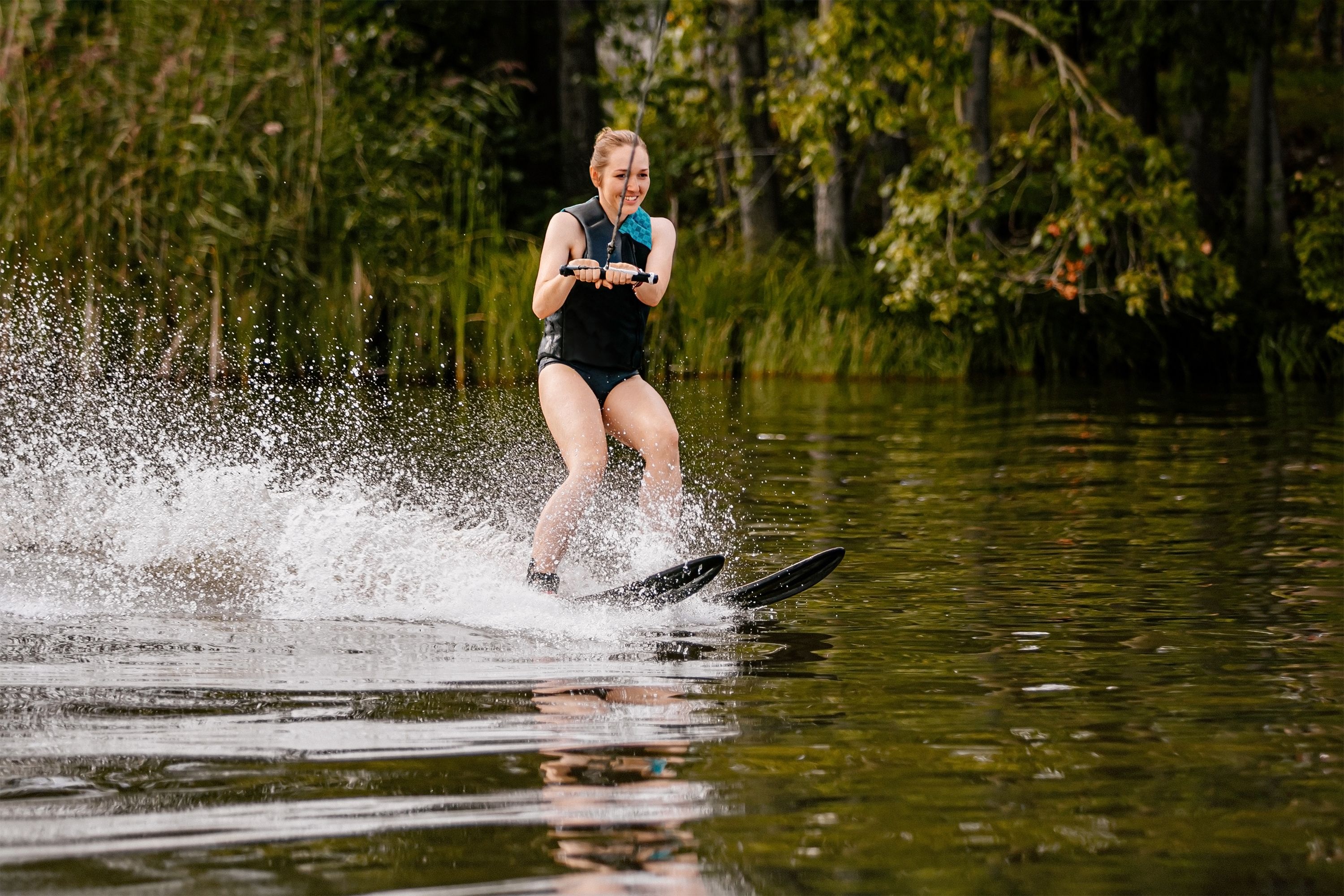
17. Water Skiing
Difficulty: Moderate
Water skiing is a little difficult to get started with (ya know, you need a boat, someone to drive it, and the fortitude to try standing up over and over again), but once you get the hang of it, it feels seriously great. Lakes are definitely the best place to try it out, as you’ll want to avoid waves and wakes (which will have your knees wobbling) as much as possible.
18. Jet Skiing
Difficulty: Beginner
Make sure you’ve skimmed your state boating laws if you’re going to hop on a jet ski in the United States since some states require a license (which is luckily a pretty simple process in most). But whether you’re still getting comfortable zipping around or pushing your limits with speed, it’s a fun way to explore a lake or surrounding beaches quickly.
19. Canoeing
Difficulty: Beginner
If this brings back memories of summer camp, just wait until you try it out as an adult! Better yet, pack a picnic and some drinks for a truly fun day out on the water. Canoeing also happens to be a great arm and core workout. Plus, it’s just a lovely way to mosey around a body of water for a few hours.
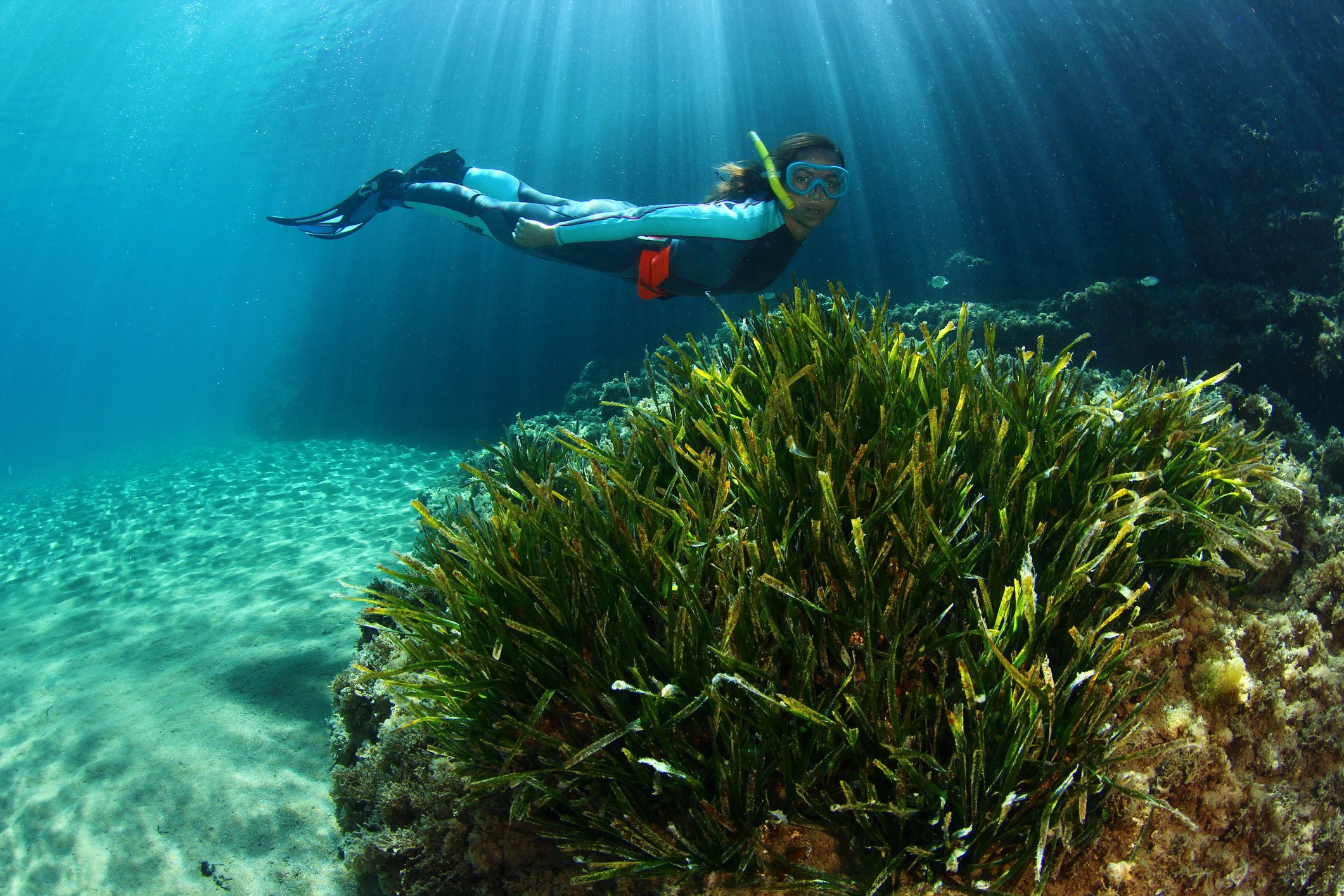
20. Free Diving
Difficulty: Moderate
Grab your fins and get ready to scope out the beauty of the ocean floor! If you’re new to free diving, know that you’ll be relying on holding your breath, so the difficulty is really up to you and your abilities. Sure, it’s a great way to get to know what’s beneath the surface of the water, it’s actually got a rich history as a competitive sport! The World Underwater Federation has plenty of resources if you want to learn more.
Source: Read Full Article
